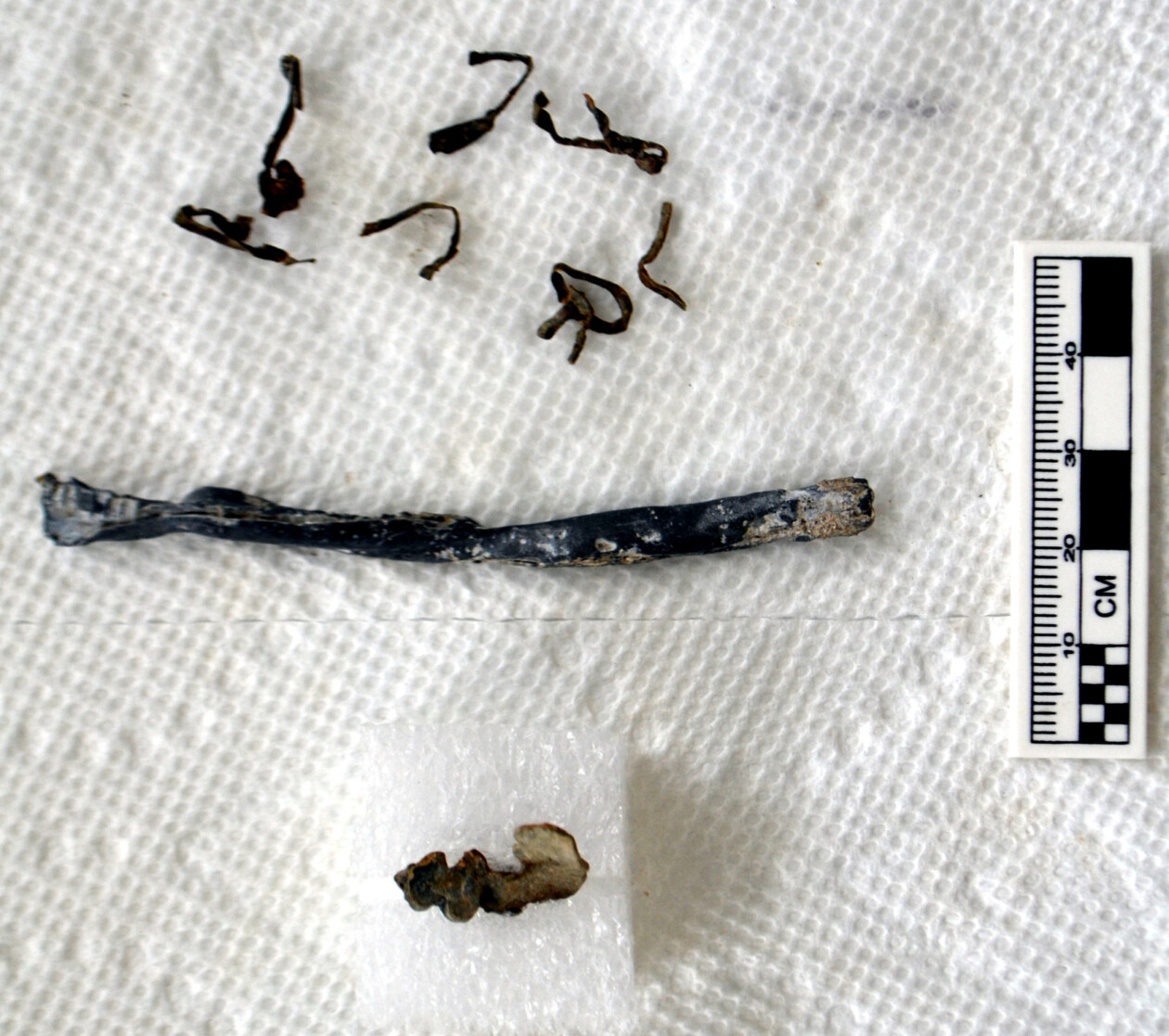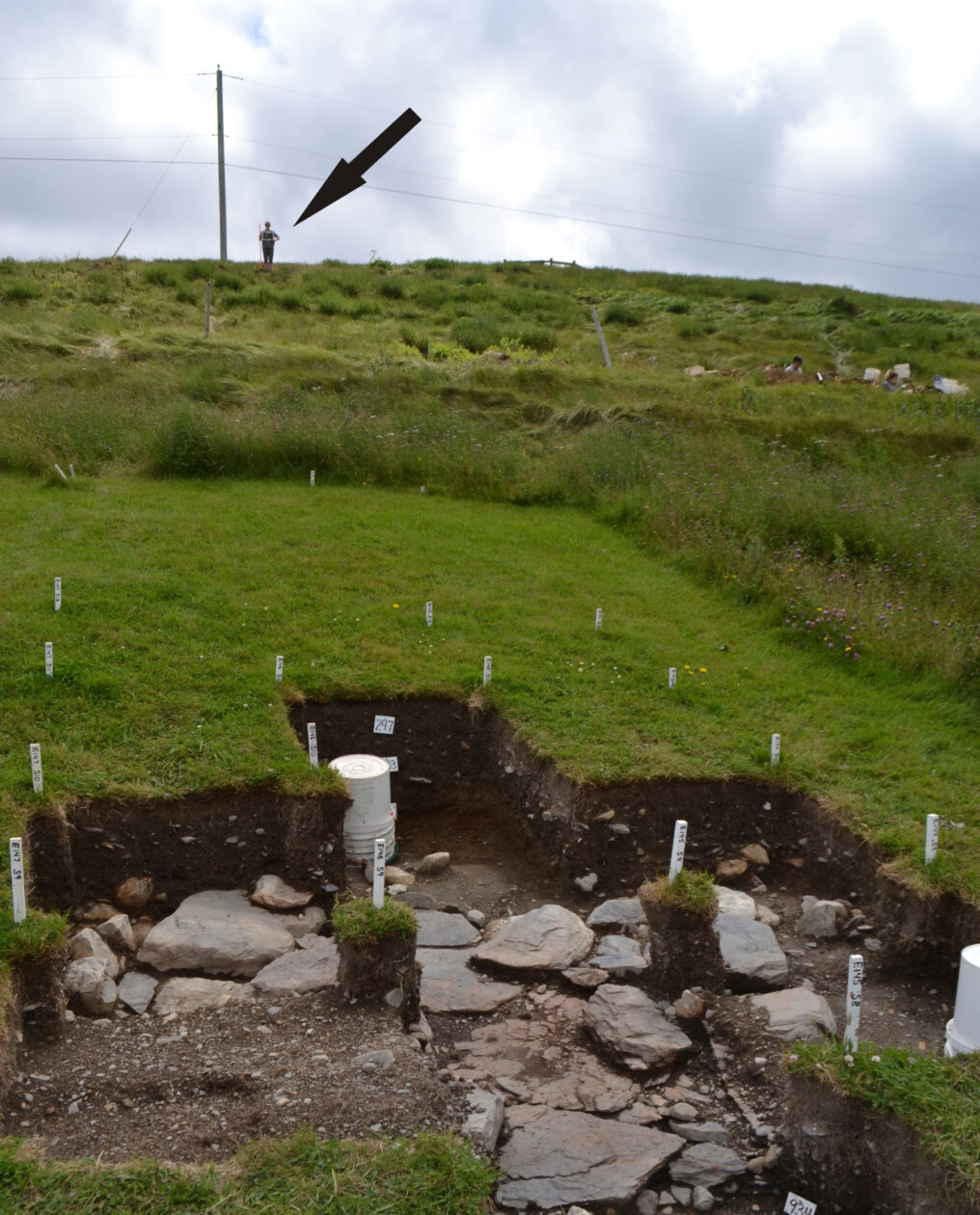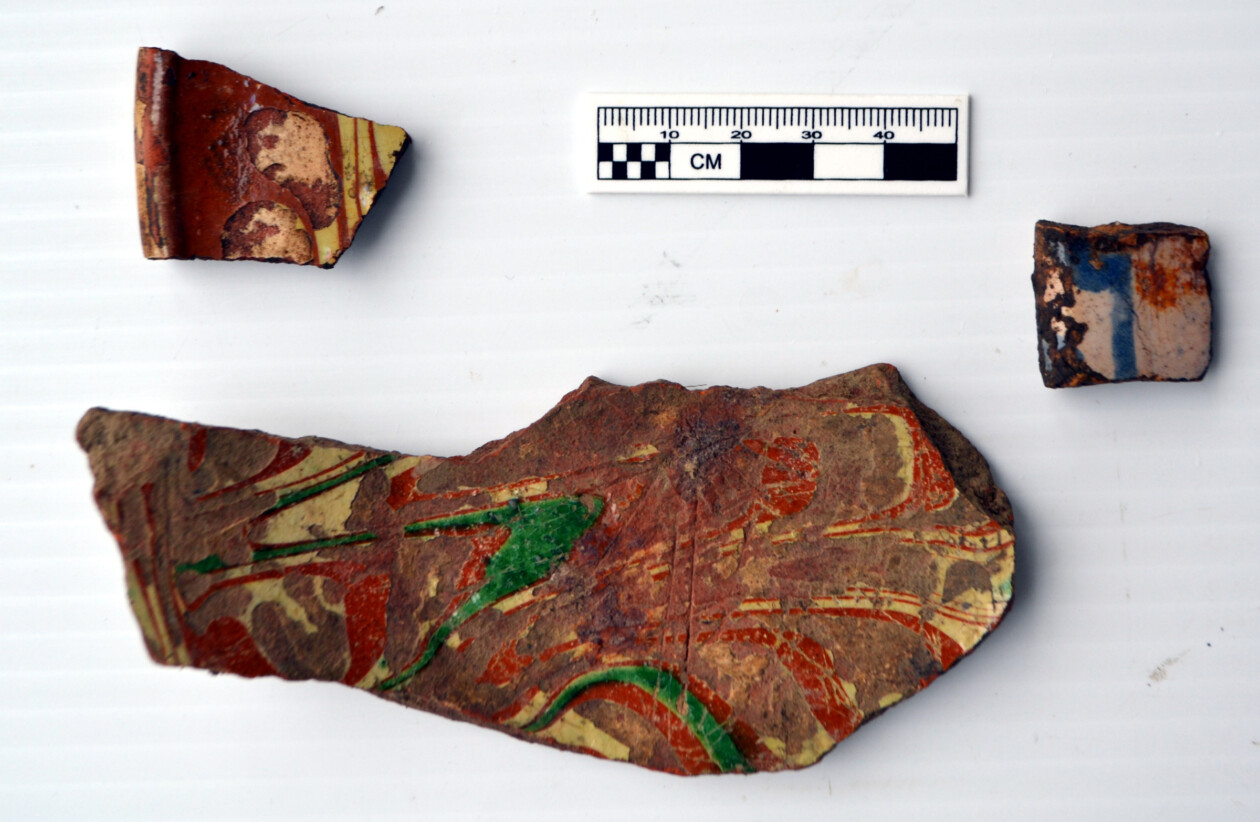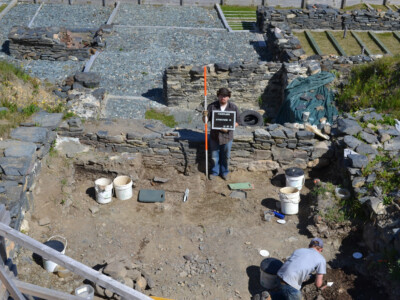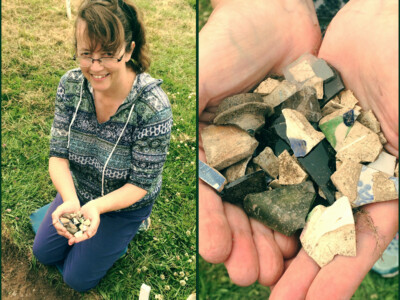The exciting discoveries from last year’s field season make writing a blog post about the 2017 excavations at Ferryland quite easy. However, it is not without its challenges. We continue to struggle with the same issue that plagues not-for-profit heritage organizations across the country — funding. Here at Ferryland we are truly blessed with an amazingly-preserved archaeological site, a highly-trained and capable staff, a dedicated team of volunteer board members running the Colony of Avalon Foundation, and a community that is very supportive of our ongoing research and excavations. The site’s fifteen thousand annual visitors are likewise enthralled with the process of archaeology and the richness and diversity of finds uncovered and conserved on a daily basis.
2021 will mark the 400th anniversary of the founding of Sir George Calvert’s colony of Avalon. Now is the time for all stakeholders — federal, provincial, municipal, university, even the general public — to recognize the national importance of Ferryland’s history and archaeology, and, in turn, invest in the long term sustainability of what is arguably the best preserved, most substantial, 17th-century historic site in North America. A wealthy benefactor or two wouldn’t go astray either!
What follows is a vision for the 2017 field season, pending sufficient funding to maintain the archaeological and interpretative programming managed through the Colony of Avalon Foundation, in partnership with faculty and staff at Memorial University’s Department of Archaeology. The 2017 excavations will also occur in conjunction with ongoing MUN graduate student research (check back to read a future blog post on graduate student Duncan Williams’ plans for this summer).
One area that we hope to continue investigating is the massive builder’s trench associated with the main living area or ‘hall’ of Lord Baltimore’s Mansion House. Despite the effort involved in excavating down though the sterile upper layers of the trench, the thin construction deposit at its bottom continues to reveal important details not just about the construction of George Calvert’s home but of the daily activities of the masons, slaters, carpenters and labourers who built it.
Furthermore, a well-sealed deposit dating from the formative years of the colony is a rarity at Ferryland; rarer still is the fact that this deposit was created by a small subset of the population. We have much to learn from continued excavations in this area. For example, last summer we uncovered many pieces of window glass, window came, turned lead and tiny cut lead strips suggesting that a tradesman known as a glazier was present at Avalon to fabricate the windows for the Mansion House and likely many of the other buildings from the 1620s.
Ten metres east of the builder’s trench and directly south of the brewhouse, graduate student Robyn Lacy and her team of volunteers will continue searching for the 1620s burial ground.
This area was chosen based on its slightly elevated location inside the original fortified settlement and its proximity to previously-excavated gravestone fragments from secondary deposits. The goal is not to locate and excavate human remains but to situate the burial ground within the context of the overall settlement and to understand colonists’ interaction with this sacred space.
Finally, in 2017, I’d like to explore two 17th-century deposits outside the original 4 acre colony. Both were revealed during last summer’s intensive test pitting: one by Robyn Lacy and her crew, and the other by Colony of Avalon field staff. These discoveries were among the most exciting in 2016 as they have great potential to shed light on the utilization of lands to the east of the original colony, known today as the Downs.
The first is located on the hillside approximately midway between the present Lighthouse Road and the parcel of land designated as Area D (which also contains architectural remains and associated deposits from the 17th-19th centuries).
The artifacts recovered from this deposit were domestic in nature and include ceramic storage, drinking, and serving vessels, wine bottles and drinking glasses, clay tobacco pipes, food bone and a variety of lead shot. Substantial quantities of North Italian marbled slipware and decorated tin-glazed earthenware fragments further suggest that those who discarded these items were of considerable means.
One of Lacy’s test pits in 2016 revealed an undisturbed midden 40cm below the surface which provides some hope that other areas were not impacted by later gardening activities.
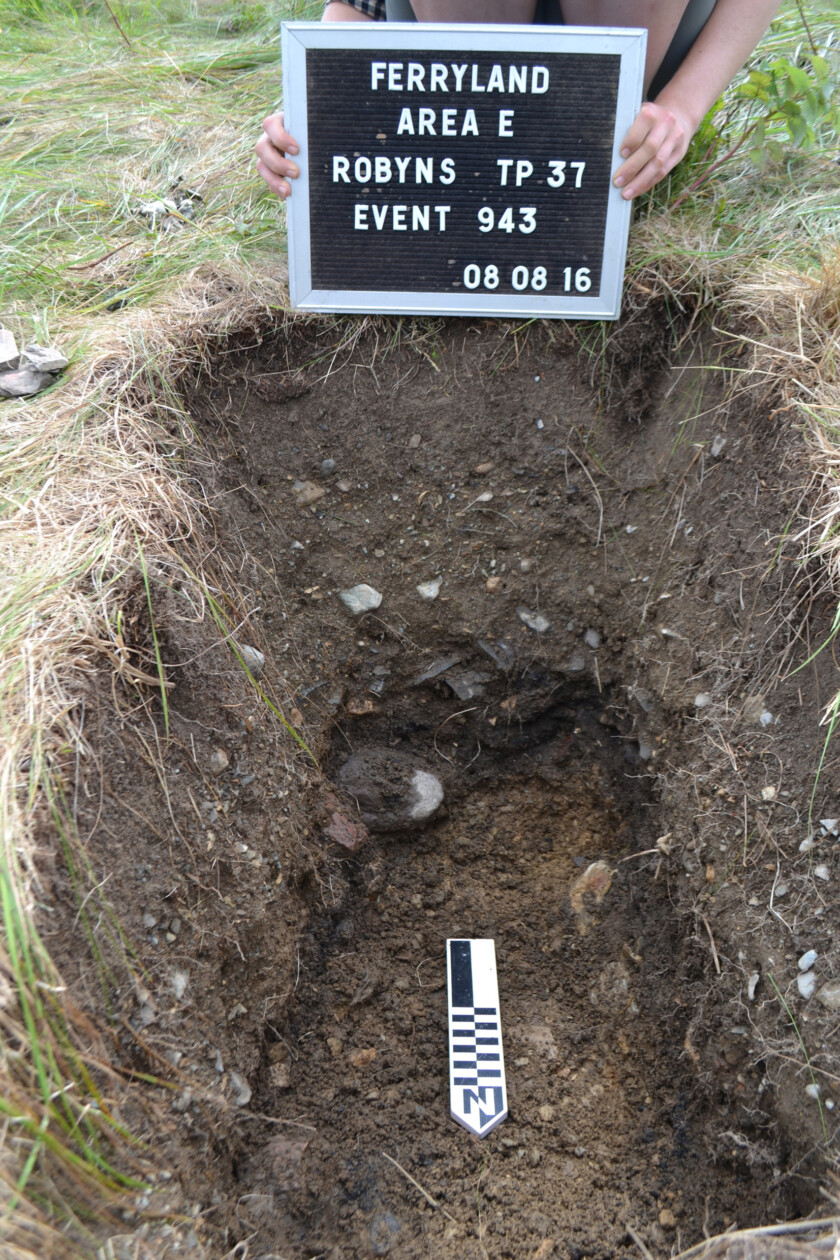
Robyn Lacy’s Test Pit 37. The dark layer seen in the profile represents the undisturbed midden deposit.
With luck, further testing in 2017 will delineate the extent of this late 17th-century occupation and any associated structural remains. An exciting prospect indeed!
The second area of interest is located in Area D, between the late 17th-century stone-lined well excavated in 1994 (and brought to our attention by Ferryland resident Wilfred Costello) and our reproduction kitchen garden. As mentioned in the 2016 field report, and in Catherine Hawkins’ November blog post, a small 2×2 metre excavation revealed a layer of large angular wall rocks and many complete roof slates, the appearance of which suggests a building collapse.
This area is worth further investigation because, to date, only structures built during the Calvert period were roofed in slate (later residents, including the Kirke family, preferred wood to cover their buildings). In addition, no Calvert-era buildings have been found outside the original fortified and enclosed settlement. The discovery leaves many unanswered questions: what are these structural remains, and when exactly was it built?
The summer of 2017 can’t come soon enough.

